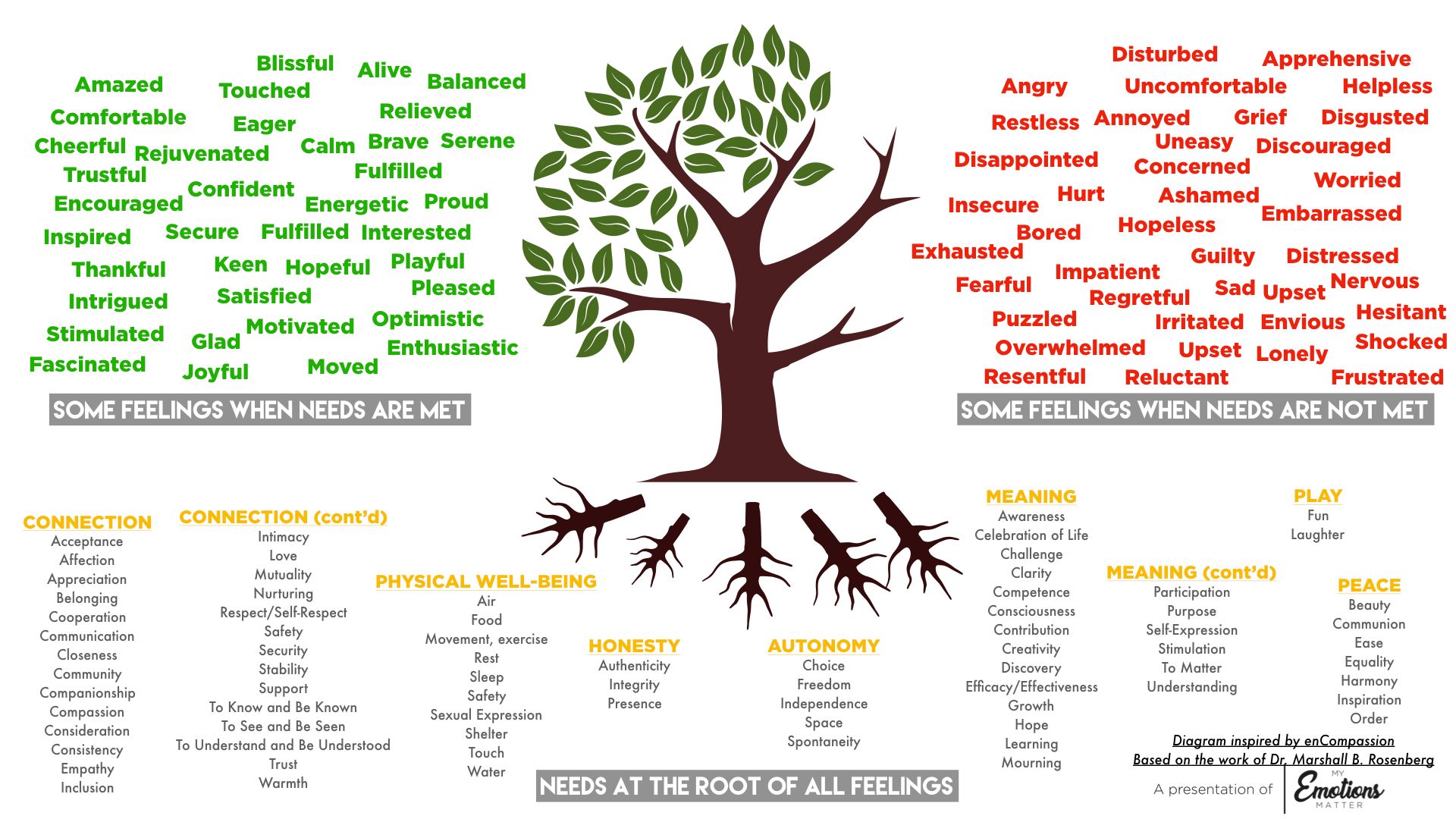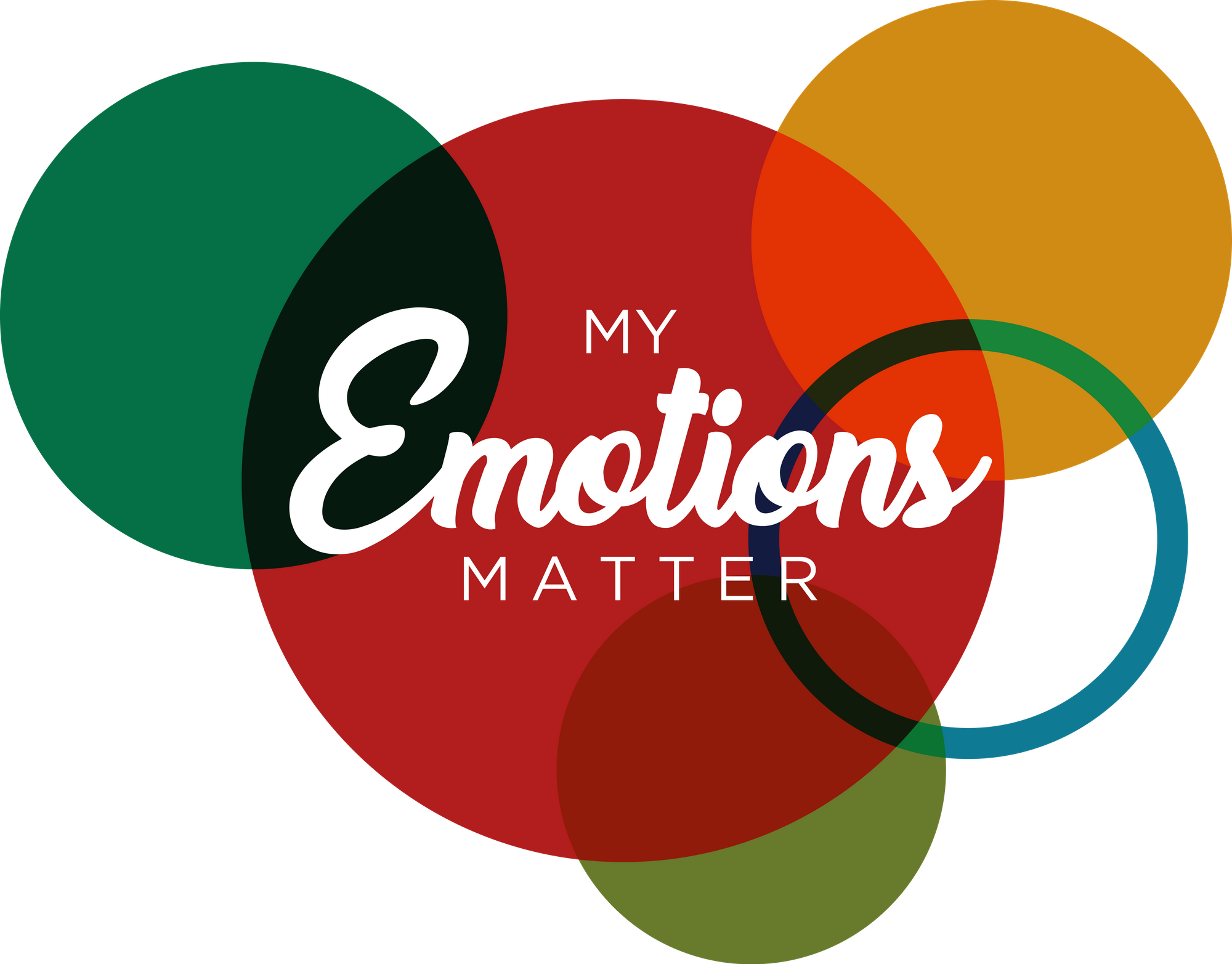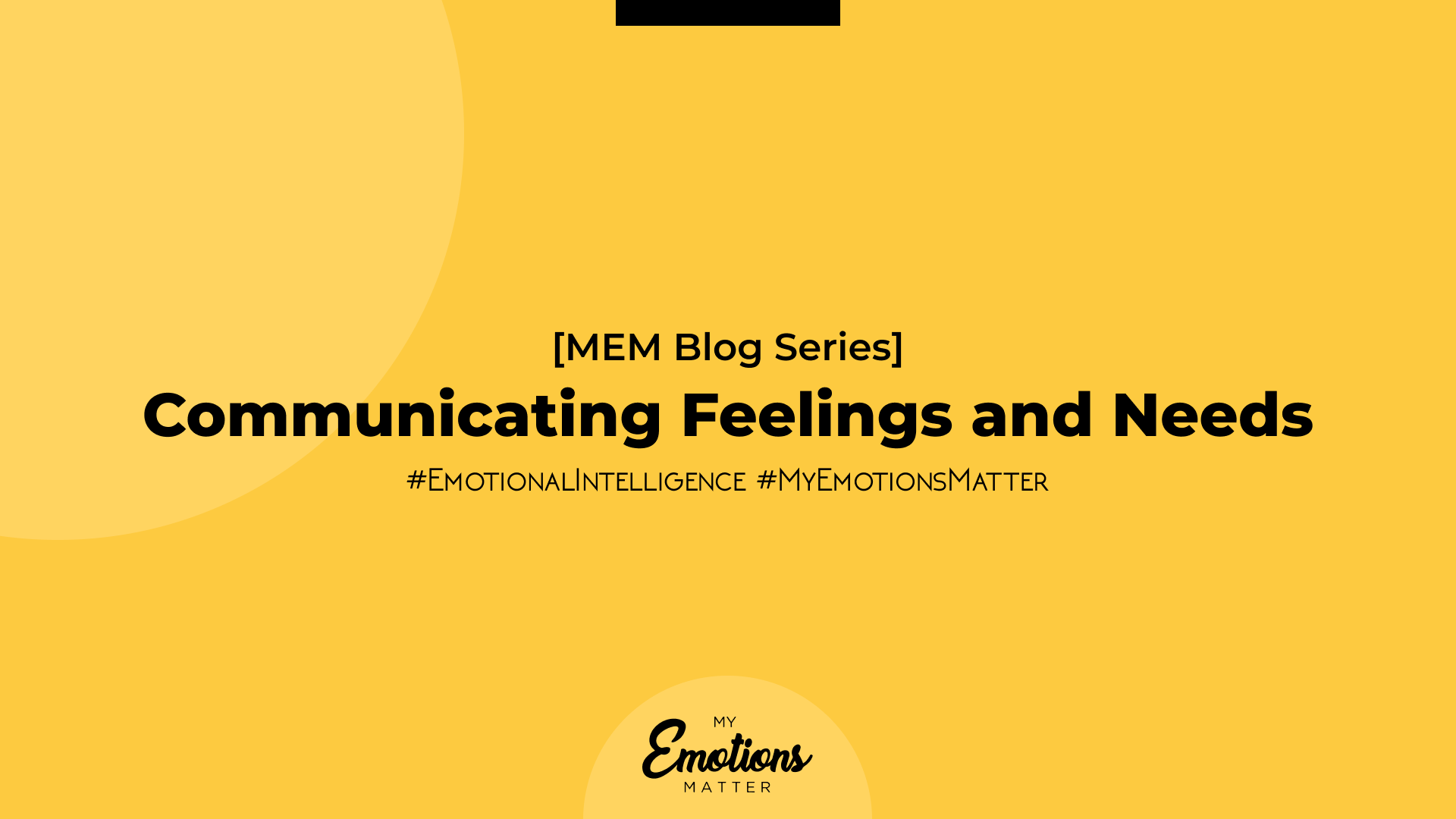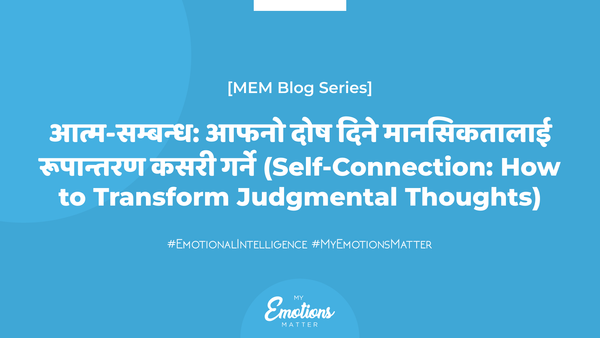Communicating Feelings and Needs
“Our repertoire of words for calling people names is often larger than our vocabulary of words to clearly describe our emotional states.”
—Marshall B. Rosenberg
On the spectrum of feeling and communicating our emotions, we’re either on the one end that says, “I’m responsible for how others feel.” Or, we’re on the other end that says, “Other people are responsible for the way I feel.” Both of these are unhelpful ways of processing our emotions.
When we invest in developing our emotional literacy, we go beyond judgments and criticisms of ourselves and others and ask ourselves instead:
- What’s alive in me/the other person right now (what are our underlying feelings and needs)?
- What would help me/the other person (what actions would help us meet our needs)?
Unless we understand needs, we won’t know what action to take (to meet those needs). We won’t understand needs if we don’t understand the feelings that point towards those needs.
Understanding Feelings
When trying to understand our feelings, we face some challenges. Too often, we confuse our feelings with the interpretations of other people’s actions or our own. We call them pseudo feelings. Let’s take an example. Say you send your friend a congratulatory message on their birthday and you don’t receive a reply until the next day. We might say, “I feel ignored.” Do you think it’s a feeling or a pseudo feeling? It’s the latter because we’re expressing what we think the other people did to us [ignore] and not how we feel in relation to what happened. How we could instead express our feelings is, “I feel sad and lonely.”
We also often use the phrase, “I feel…” but follow up with expressions that are not really feelings. This is because we often confuse feelings with:
- Thoughts
Feelings and thoughts are not the same. Feelings are physiological and emotional reactions to what we observe around us. Thoughts are the perceptions or the sense that we try to make of our experiences.
Thought disguised as feeling: “I feel like a failure.”
Feeling: “I’m sad that I could not play Ukulele even after learning for a month.” - What we think we are
Feeling and what we think about ourselves are not the same. What we think about ourselves constitutes our judgments, thoughts, and interpretations about ourselves.
What we think we are disguised as feeling: “I feel inadequate as a guitar player.”
Feeling: “I don’t feel confident to play electric guitar.” - How others react or behave toward us
Feelings and how others react or behave toward us are not the same. Words like ‘misunderstood’ express how we interpret others, rather than how we feel.
How others react or behave toward us disguised as feeling: “I feel misunderstood.”
Feeling: “I feel disappointed because I didn’t have a chance to explain my point of view.”

Understanding Needs Beneath the Feelings
Becoming emotionally literate is also about understanding that our feelings come not from the actions of others but from the way we interpret the world. And we interpret the world on the basis of our needs. Notice how someone might perform the same action (eat our lunch) and yet we might feel differently when we were hungry (annoyed) or when we didn’t want to eat but were somehow not wanting to waste the food (relieved). Taking responsibility for our feelings means to understand that other people’s actions can only be the stimulus- and not the cause of how we feel.
Our feelings come from our needs. Needs are universal and contain no reference to a particular person’s actions. All of us have a need for Connection, Play, Physical Well-being, Play, Peace, Autonomy, Honesty, Meaning among many others. When one or more of these needs are fulfilled, we experience pleasant emotions such as Joy, Amazement, Encouragement, Surprise among many others. Similarly, when we can’t fulfill one more of our needs, we experience unpleasant emotions like Anger, Disgust, Sadness, Fear among many others. So, in a way, our feelings are part of an automatic feedback system that informs us whether our needs are fulfilled or unfulfilled.
The reasons we want to be able to understand the relationship between feelings and needs are:
- To have clarity about where our emotions come from.
Our feelings come from our needs and not from other people’s words or actions. - To be alive to our fulfilled and unfulfilled needs on any given day.
The more we’re aware of which needs of ours are fulfilled and which aren’t, the more we can understand ourselves. - To be able to express our feelings and needs accurately to the people around us so that we can invite understanding from them.
We often rely on others to read our mind and understand what we need. - To invite cooperation from others to help us fulfill our needs and to help others fulfill their needs.
When we can help others know how they can cooperate with us in fulfilling our needs and offer similar cooperation to them to help them fulfill their needs, we can create more healthy relationships.




